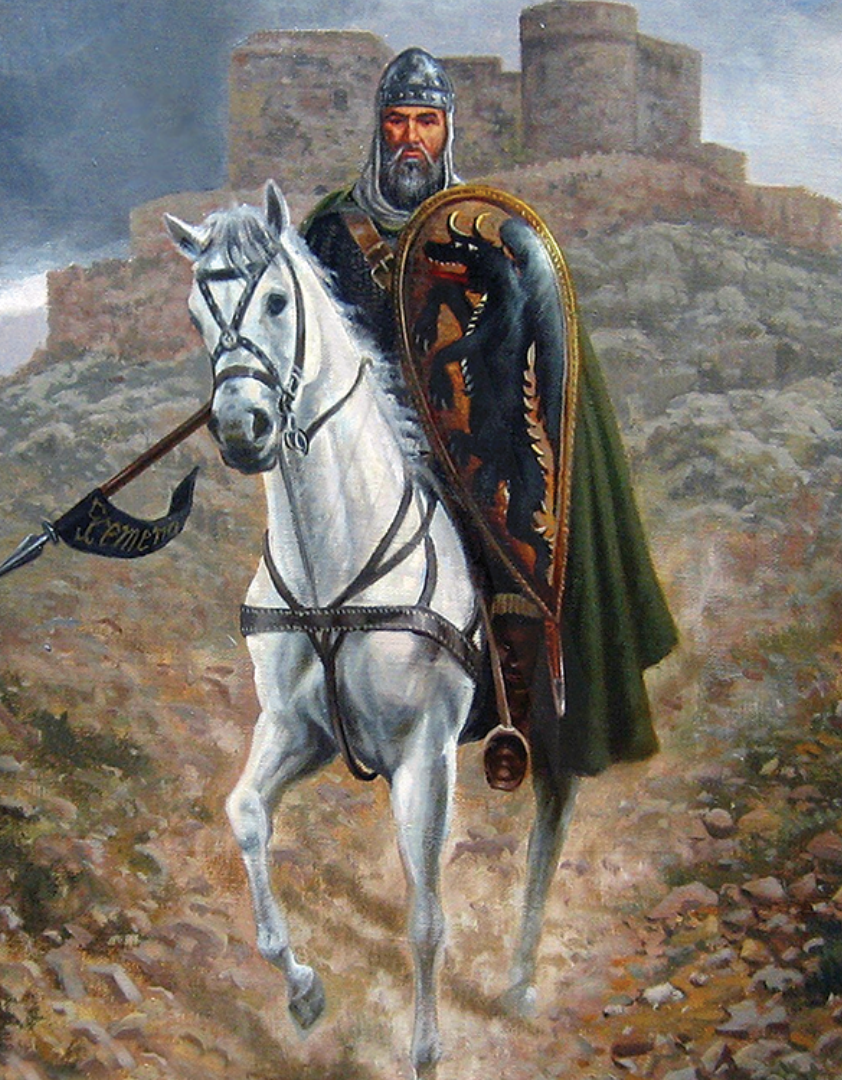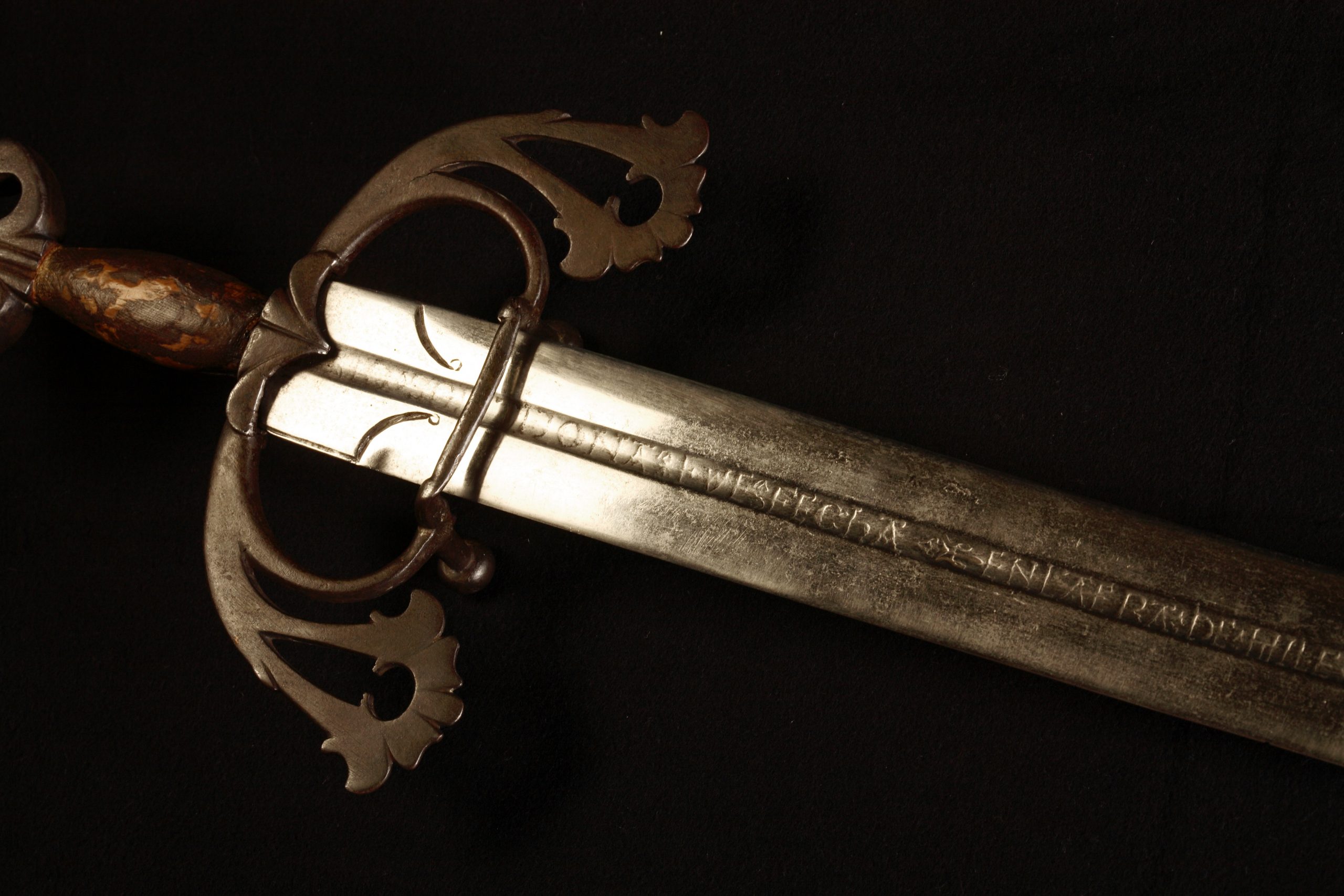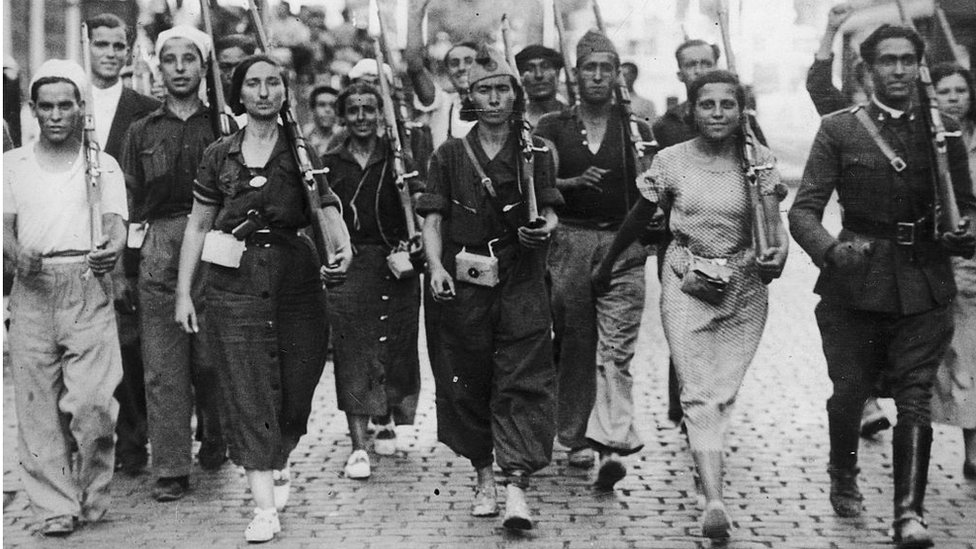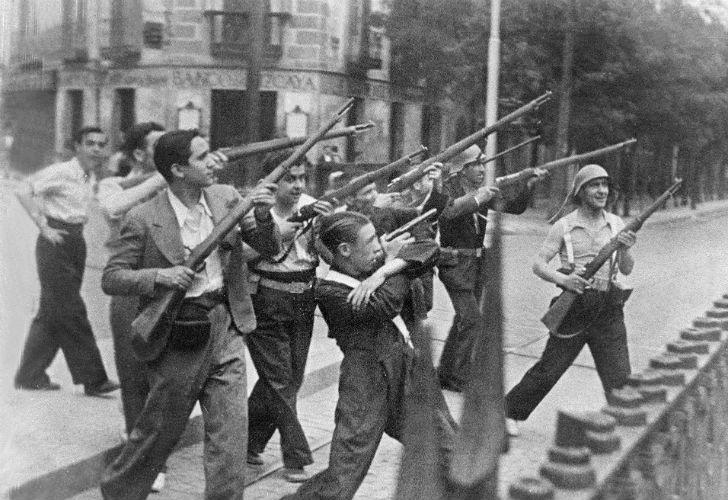The Tizona Sword
Friday, August 30, 2024
In the annals of Spanish history, few artefacts command as much reverence and awe as the Tizona sword. This legendary blade, purportedly wielded by Rodrigo Díaz de Vivar—better known as El Cid—, is not merely a weapon but a symbol of valour, gallantry, and the complex socio-political fabric of medieval Spain. El Cid, a formidable military leader and nobleman of the 11th century, is a seminal figure in Spanish lore, synonymous with the reconquest of the Iberian Peninsula from the Moors. The Tizona is integral to his mythos, embodying the essence of a hero who transcended mere mortal boundaries to become a legend.

The Tizona's origins are shrouded in the mists of history, with its first documented references dating back to the "Cantar de mio Cid," an epic poem that extols the virtues and deeds of El Cid. The sword's name, "Tizona," resonates with the force of thunderbolt, suggesting its invincible power and the fear it instilled in the hearts of its wielder's enemies. According to legend, Tizona was one of the two great swords belonging to El Cid, the other being Colada. These swords were not only weapons of war but also represented El Cid's authority and his martial prowess.
While the poetic saga glorifies Tizona as a singular weapon of unmatched potency, historical analyses suggest that it was a product of the sophisticated Andalusian steel-making techniques of the time. The craftsmanship attributed to the sword indicates a blend of various cultural influences, reflecting the confluence of Christian, Muslim, and Jewish traditions in medieval Spain. Swords of this era were typically made from high-carbon steel, with intricate patterns forged into their blades, a testament to the artisan's skill and the technology of the period. The exact dimensions and specifications of the original Tizona are matters of speculation, as multiple versions exist, each claiming authenticity.


The Tizona sword occupies a pivotal place in Spain's cultural and historical psyche. Beyond its martial significance, the sword symbolizes the Reconquista, a centuries-long campaign by Christian states to reclaim territory from Muslim rule. El Cid, straddling the worlds of Christianity and Islam, emerges as a unifying figure, with Tizona as his emblem. The sword represents the valour, honour, and cultural synthesis that characterized the medieval Iberian Peninsula.
Over the centuries, several swords have been identified as the legendary Tizona. One of the most famous is housed in the Museum of Burgos, Spain, purportedly donated by the Marquis of Falces in the 19th century. The authenticity of this sword has been the subject of debate among historians and scientists. In 2007, a study using advanced metallurgical techniques confirmed the sword's origin to the late 11th or early 12th century, aligning with El Cid's lifetime, thus lending credence to its legendary status. However, whether this sword truly belonged to El Cid remains an enigma wrapped in the layers of myth and history.
The Tizona sword, attributed to El Cid, transcends its identity as a mere historical artefact to become a beacon of Spanish identity and pride. It embodies the essence of a period marked by conflict, coexistence, and the melding of diverse cultures. More than a weapon, Tizona is a testament to the enduring legacy of El Cid, a hero whose life continues to inspire and captivate the imagination of people around the world. Whether resting in a museum or living on in the romanticized tales of yore, Tizona remains an indelible icon of Spanish heritage.
 1
Like
Published at 8:58 PM Comments (0)
1
Like
Published at 8:58 PM Comments (0)
The 10 Commandments of Paella
Tuesday, August 13, 2024

Many crimes have been committed in the name of paella but now researchers in Valencia have laid down 10 commandments of what thou shall and shall not put in their national dish.
The ten permitted ingredients are; rice, water, olive oil, salt, saffron (or food colouring), grated tomato, flat wide green beans, butter beans, chicken and rabbit. No fish or mussels or prawns or anything of the sort.
The research was carried out by social scientists at the Universidad Católica de Valencia at the instigation of local chef Rafael Vidal. The researchers questioned 400 amateur chefs aged over 50 from 266 Valencian villages.
The results were published in the International Journal of Gastronomy and Science and were presented at a meeting titled "A nightmare global discussion: what are the ingredients of Paella Valenciana?"
Ninety per cent of those interviewed agreed on the 10 essential ingredients, with some disagreeement over rabbit (88.9%). Paprika (62.5%) and rosemary (52.2%) are also considered acceptable and very common, as are artichokes (46.3%), when in season.
“Everyone has an opinion about paella but the idea was to do fieldwork to establish what are the essential ingredients,” says Pablo Vidal (no relation), an anthropologist at the university involved in the research.
“What we have shown is what is always an ingredient of paella, what ingredients are sometimes used and what should never be used.”
To the Valencians, their version of paella is "the" version and nothing else is worthy of the name. Some will even argue that it can only be made from water from the region.
If people in the rest of Spain want to add seafood, sausage or even black pudding, that’s their business, says Vidal, but in Valencian eyes, it’s not paella and never will be.
The "typical" mixed meat and seafood paella encountered elsewhere in Spain is generally dismissed by Valencianos as Arroz con Cosas (rice with things).
“In Valencia everyone thinks their recipe is the best which is why we carried out this research, to try to arrive at a consensus,” he said.
Last year the regional government declared Valencian paella a cultural asset. “Paella is an icon of the Mediterranean diet, because of both its ingredients and its characteristics as a representation of Valencian culture,” read the eight-page declaration which was published in Spain’s official state bulletin.
The new study says that paella’s global popularity “is both a success and a challenge”. One such challenge was the outrage caused by the British chef Jamie Oliver’s recipe for paella with chorizo.
“Oliver helped to provoke a discussion about what makes an authentic Paella Valenciana,” says Vidal. “I’m sure that one day he’ll have a street in Valencia named after him.”
Like a barbecue, paella is a dish for social events that are usually prepared at the weekend or on holidays. Vidal says there are as many recipes as there are cooks and what makes a good paella is a matter of opinion, except in Valencia, where it’s a question of science, or perhaps a religion.
 2
Like
Published at 8:01 AM Comments (0)
2
Like
Published at 8:01 AM Comments (0)
The Spanish Civil War: A Brief Summary
Monday, August 5, 2024
The Spanish Civil War, lasting from 1936 to 1939, was a turbulent period that not only devastated Spain but also foreshadowed the global conflict that would follow with World War II. This internal conflict ultimately led to nearly four decades of dictatorship under General Francisco Franco. Here, we examine the origins, development, and culmination of the Spanish Civil War, culminating in Franco's rise to power.
The origins of the Spanish Civil War can be traced back to the profound political and social tensions that emerged in Spain during the early 20th century. The seeds of conflict were sown during the years following the industrial and agrarian revolutions of the 19th century, which had created significant disparities in wealth and opportunity. The establishment of the Second Spanish Republic in 1931 escalated tensions, as its ambitious social and political reforms polarized the Spanish society.
The Republic sought to modernize Spain's infrastructure, education system, and economy, but its secular policies, particularly those aimed at reducing the influence of the Catholic Church, alienated conservative segments of the population. Meanwhile, land and labor reforms alarmed the aristocracy and wealthy landowners. The military, too, was concerned by the republic's reforms and perceived weakness.

The immediate precursor to the war was a military coup attempt launched in July 1936 by Nationalist forces against the Republican government. The coup, led by a group of high-ranking army officers including General Francisco Franco, was only partially successful, leading Spain to be divided into a Republican-held area and a Nationalist-controlled zone.
The conflict quickly escalated into a full-scale civil war, as both sides sought support from international allies. The Republican government received aid from the Soviet Union and International Brigades composed of leftist volunteers from across the globe, while the Nationalist rebels were supported by Nazi Germany and Fascist Italy.
The war consisted of several major phases and key battles, including the Battle of Madrid, where Republican forces managed to hold the city against a Nationalist onslaught, and the Battle of the Ebro, the longest and bloodiest battle of the war. Despite several successes, the Republican side was plagued by internal divisions between anarchists, socialists, and communists, which undermined their efforts to create a cohesive military strategy.
The Nationalists, on the other hand, benefited from better coordination, superior weaponry supplied by their fascist allies, and a unified command under Franco. By the end of 1938, the Nationalist forces had captured Catalonia, cutting off the Republic from the French border and securing victory in the war.
The war formally ended on April 1, 1939, when the last of the Republican forces surrendered. The aftermath was brutal for those associated with the Republic, with tens of thousands executed or imprisoned in a sweeping wave of repression.
General Francisco Franco emerged as the unchallenged ruler of Spain, establishing a dictatorship that would last until his death in 1975. Under Franco's regime, Spain remained largely isolated from the rest of Europe and underwent a period of censorship, economic hardship, and political repression. The Francoist period also saw the imposition of conservative social norms, the reinstatement of Catholicism as the state religion, and a slow but eventual economic recovery and modernization from the 1950s onward.

The Spanish Civil War was more than a national conflict; it served as a prelude to World War II, embodying the ideological battles between fascism, communism, and democracy that would soon engulf the world. Its legacy is complex, marked by decades of dictatorship under Franco, the loss of hundreds of thousands of lives, and the deep divisions it created in Spanish society—wounds that, for some, have yet to fully heal. The war's end and the ensuing dictatorship under Franco dramatically shaped the course of Spanish history, leaving an indelible mark on the nation's identity and its path to democracy.
 1
Like
Published at 8:37 AM Comments (3)
1
Like
Published at 8:37 AM Comments (3)
Spam post or Abuse? Please let us know
|
|